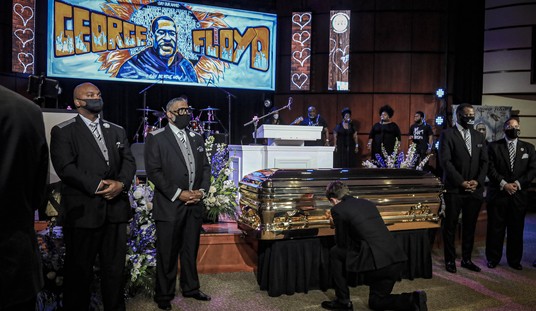One of the battles percolating around the issue of Critical Race Theory (CRT) centers on whether or not the neo-Marxist curriculum — and that’s according to a scholar affiliated with the left-leaning Brookings Institute — is merely teaching students Black History, which is universally accepted by good parents and educators as a right and proper educational course of action.
It becomes clearer by the day that not only is CRT not synonymous with Black History curriculum, it’s being taught at the expense of other necessary costs related to education. Take Francis Howell School District in St Charles County, MO, for example, who paid a CRT consultant — touting the line about CRT’s connection to Black History education and offering strategies to hide the curriculum from parents — a $15 thousand dollar consultation fee while operating a $12,000,000 operating fund deficit in Fiscal Year 2021.
Nicole Neily, President of Parents Defending Education, a “national grassroots organization working to reclaim our schools from activists imposing harmful agendas,” says the Francis Howell case goes a long way toward explaining the extraordinary pushback to CRT by parents and other community members.
“It’s little wonder parents are upset when districts choose to spend money they don’t have on services that the community doesn’t want,” Neily says. “And then conspires to hide that information from concerned families. These actions erode trust between schools and families.”
Parents Defending Education has been compiling tips such as the above video and making them available as resources and inspiration to others fighting the blanket adoption of CRT in schools across the country. The video above came with the following text posted to Rumble:
Watch supporters of the proposed Black History course in the Francis Howell School District (in St Charles County, MO) present their sanitized sales pitches in public. Then go behind the scenes to see how Dr. King, their consultant (paid $15K by the district), sets them up to write a Critical Theory based history curriculum and hide it from parents. Finally, there are several minutes of questions asked by teachers and counselors in the district (answered by Dr. King) as they attempt to plan how to bypass parent concerns and hide the content of the curriculum in a push for social justice. This video is clipped from the full presentation for the sake of time, but the intent and meaning of speakers’ comments has not been changed.
Another recent tip that came to Neily’s group involves the “Equity Framework” introduced in Chicago Schools in September 2018 in which districts are asked to pursue equity as a goal in every aspect of education, up to and including capital improvements and the development of curriculum.
Parents Defending Education recently released screenshots from a board meeting pushing this framework in which all staff were asked to take an “anti-racist” stance and adopt the “responsive education and diversity policy” that grew out of the 2018 equity framework.
If parents and community members find themselves conflicted about pushing back against CRT because they instinctively know the embrace of diversity is a good thing, the Wall Street Journal column from Brookings scholar William Galston posted above should ease their minds a bit. And perhaps spur them to continue to fight.
- Critical race theory is an explicitly left-wing movement inspired by the thinking of an Italian neo-Marxist, Antonio Gramsci. Against classic Marxism, for which material conditions are primary, Gramsci (1891-1937) focused on “hegemony”—the system of beliefs that “reinforces existing social arrangements and convinces the dominated classes that the existing order is inevitable,” as Ms. Crenshaw puts it.
- The theory offers a fundamental critique of the civil-rights movement and the liberal ideology it reflects. Such theorists argue that the civil-rights movement scored some “symbolic” gains for black Americans but left their material conditions mostly unchanged, in part because civil-rights law is inherently limited. Such laws treat “discrimination” as isolated acts by specific individuals or businesses, as exceptions to prevailing norms and practices, not as pervasive and “systemic.” Civil-rights law can mitigate the consequences of illegal and unjust acts, but it can do nothing to redress the continuing impact of past oppression.
- Critical race theory rejects the principle of equality of opportunity. Its adherents insist that equality of opportunity is a myth, not a reality, in today’s America, and that those who pursue it are misguided. The real goal is equality of results, measured by black share of income, wealth and social standing. Critical race theorists reject the idea that sought-after goods should be distributed through systems that evaluate and reward “merit.”
Increasingly, experts on both sides are publicly declaring critical race theory seeks not to educate children on the great and noble battles toward inclusion — the wounds, the healing, the division, and the ultimate successes — the country has negotiated almost since its founding. Rather, CRT attempts to teach a newer, European form of Marxism that celebrates division and separation rather than growth and progress.














Join the conversation as a VIP Member